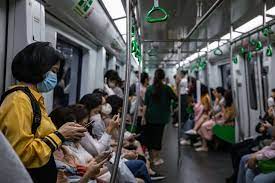Ensuring the safety of women during night-time travel in Southeast Asian countries is a critical concern that demands focused attention. As urban landscapes evolve and public transportation becomes a lifeline for many, understanding the unique challenges faced by women in the region is paramount.
South East Asian countries, including but not limited to countries such as Thailand, Indonesia, Malaysia, and the Philippines, present a complex tapestry of challenges for women navigating public spaces after dark.
Issues such as poorly lit transportation hubs, insufficient security measures, and concerns regarding personal safety contribute to a heightened sense of vulnerability. Investigating safety concerns in public transportation is not merely an exploration of challenges but a proactive step toward fostering inclusive and secure societies.
In the Southeast Asian context, where public transportation is integral to daily life, addressing women’s safety concerns becomes a pivotal aspect of urban planning and societal well-being. Women navigating public transportation in Southeast Asian countries encounter a myriad of challenges after dark, significantly impacting their safety and confidence.

In bustling transportation hubs across Southeast Asia, the inadequacy of lighting stands out as a prominent challenge. Poorly lit areas create shadows and concealment, fostering an environment where women may feel vulnerable to harassment or other security risks. This section delves into the repercussions of insufficient lighting and its implications for the safety of women using public transportation.
Nighttime travel amplifies concerns about personal safety and security for women in South East Asian countries. Instances of harassment, theft, or assault can deter women from utilizing public transportation altogether. This subsection explores the specific safety concerns that women grapple with and the impact on their sense of security during nighttime journeys.
The challenges faced by women extend beyond immediate safety concerns to encompass broader issues of mobility and accessibility. Uneven terrain, poorly marked pathways, and limited transportation options create barriers that disproportionately affect women’s ability to navigate public spaces after dark. This section examines how these challenges impede the mobility and accessibility of women, further emphasizing the need for targeted interventions.
Strategic deployment of emergency lighting emerges as a key solution to mitigate the challenges faced by women during nighttime travel. By addressing specific concerns through illumination, emergency lighting contributes not only to the safety of women but also to the overall enhancement of public transportation security.
Emergency lighting plays a crucial role in enhancing visibility within public transportation hubs. Well-lit areas serve as a deterrent to potential wrongdoers and create an environment where individuals, especially women, feel more secure. This section explores how strategically placed emergency lighting can contribute to deterrence and significantly improve overall visibility.
Strategic deployment of emergency lighting involves identifying and illuminating key areas where safety concerns are most pronounced. From boarding platforms to pedestrian pathways, targeted illumination helps address specific challenges faced by women during nighttime travel. This subsection delves into the importance of precision in emergency lighting placement to effectively address safety concerns.
Beyond individual safety concerns, the strategic deployment of emergency lighting contributes to the broader landscape of public transportation safety. Well-lit spaces foster a sense of security for all passengers, creating an inclusive environment that encourages the use of public transportation. This section discusses how emergency lighting initiatives contribute to an overall enhancement of safety within public transportation systems.
In the pursuit of enhancing safety for women in public transportation, the integration of advanced emergency lighting technologies emerges as a transformative solution. Sanforce Technology, with its commitment to innovation, offers a range of products and resources that align seamlessly with the evolving landscape of emergency lighting.
Sanforce’s suite of advanced emergency lighting technologies goes beyond conventional solutions, incorporating cutting-edge features that redefine safety standards. Constant Current Emergency Drivers, Constant Voltage Emergency Drivers, and Energy-Saving Emergency Drivers are among the offerings designed to meet the diverse requirements of public transportation hubs in South East Asian countries. These technologies ensure a reliable and efficient emergency lighting system that adapts to the specific challenges faced during nighttime travel.
Authorities should prioritize the integration of smart features tailored to address the safety concerns of women in public transportation. Motion sensors, occupancy sensors, and adaptive lighting capabilities should be integral components of smart emergency lighting solutions.

These features enhance visibility precisely where and when needed, optimizing safety for women navigating through transportation hubs after dark. The intelligent response of these technologies aligns to create secure and well-lit environments.
In addition, LED Emergency Drivers play a pivotal role in ensuring energy-efficient illumination. This not only contributes to a sustainable environment but also extends the operational life of emergency lighting systems, ensuring long-term reliability.
Emergency lighting technologies are designed with adaptability and seamless integration in mind. Recognizing the importance of working within existing infrastructure constraints, Sanforce offers solutions that can be easily retrofitted into current lighting systems. This adaptability ensures a cost-effective approach to upgrading emergency lighting, allowing public transportation authorities to enhance safety without undertaking extensive infrastructure overhauls.
The integration of our emergency lighting technologies with existing infrastructure is not only a practical solution but also a strategic one. It streamlines the implementation process, minimizing disruptions while maximizing the impact on safety. Our commitment to adaptability reflects a nuanced understanding of the challenges faced by public transportation authorities in Southeast Asian countries.
The technology and innovation embedded in our emergency lighting solutions provide a holistic approach to addressing the safety concerns of women in public transportation hubs. By combining advanced technologies, smart features, and adaptability, we contribute to the creation of safer, more secure environments for women navigating through public transportation systems after dark.
Not sure what you required for your lightining project ?
Get in touch with us for FREE consultation.